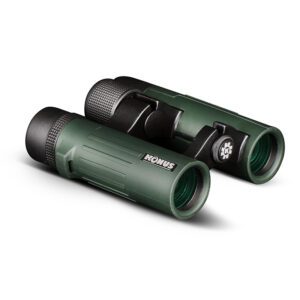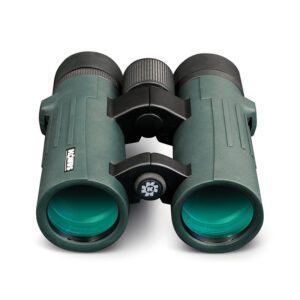Introduction

Overview of the invention
The telescope is a significant scientific invention that has radically transformed our understanding of the universe and our place in it. When considering the question, “who invented the telescope”, it is critical to note that it was the invention born out of advancements in lens crafting techniques and scientific curiosity in the early 17th century. The telescope paved the way for new discoveries and facilitated major developments in astronomical science.
The telescope is a complex device that requires a deep understanding of optics and engineering, and the invention of the first known practical telescopes, which were refracting telescopes, is credited to Hans Lippershey, a Dutch eyeglass maker. When “who invented the telescope” is discussed, it’s explicit that credit is due to the ingenious union of craftsmanship, scientific knowledge, and curiosity.
Misconception about Galileo Galilei being the first inventor

Over the years, a misconception has propagated widely in discussions around “who invented the telescope“. Many believe that it was Galileo Galilei, the well-known Italian scientist. This misconception, however prevalent, is not entirely accurate. While Galileo made significant contributions to the field and was undeniably instrumental in promoting the use of telescopes for astronomical observation, he did not invent the device.
In the quest to answer “who invented the telescope”, it is established that Galileo, upon hearing about the invention in 1609, built on the basic design and produced his own telescopes, which was superior to its Dutch counterparts. His telescopes had enormously high magnification for that time and it is this innovation that allowed him to observe celestial bodies like Jupiter’s moons and stages of Venus – observations which ultimately led to the profound shift from geocentric to heliocentric understanding of our solar system.
Therefore, while Galileo is integral in the history of telescopes, asserting him as the sole answer to “who invented the telescope” is a clear misconception. It’s an invention that stands on the shoulders of many great minds, from the actual inventor Hans Lippershey, to Galileo Galilei, and to all subsequent scientists and inventors who have refined and enhanced it over the centuries. Thus, it’s a wonderful reminder of how scientific advancements are often a collaborative effort that transcend individual minds.
The Actual Inventor – Hans Lippershey

Lippershey’s background as a German-Dutch glass maker
Hans Lippershey was born in 1570 in Wesel, Germany. At the age of 24, he settled in Middelburg, which is situated in the province of Zeeland, Netherlands. There he set up his shop, where he specialized in making spectacles and crafting lenses of various sizes. The question of “who invented the telescope” finds its answer in this German-Dutch glassmaker who played a significant role in crafting the first working model of a telescope.
His innovation in reducing light while focusing it in his telescope
Lippershey’s groundbreaking work evolved from observing children playing with his lenses. This led him to the innovative thought of combining specially crafted lenses to create the first working model of a telescope. When one wonders about “who invented the telescope”, Hans Lippershey’s innovation in reducing and focusing light through lenses stands out.
who invented the telescope

The origin of telescopes traced to early eyeglasses and lenses
“Who invented the telescope” is a question rooted in the early developments of eyeglasses and lenses. These optical devices laid the foundation for the advent of the telescope, serving as the building blocks for the astronomical tool that would revolutionize our understanding of the cosmos.
The improvement of lens-making techniques towards the end of the 1500s and early 1600s
As science and technology progressed towards the end of the 15th century and into the 16th century, there were significant advancements in lens-making techniques. This period, in effect, bridged the gap between early optical devices and the telescope, providing new insights into “who invented the telescope”.
Lippershey’s experimentation leading to the first telescope
Lippershey’s dedication and experimentation with lenses led to the invention of the first crude telescope. This innovation in 1608 marked a significant turning point in astronomical observation, redefining our understanding of “who invented the telescope”.
The Patent Controversy

Lippershey’s application for a patent in 1608
In 1608, Hans Lippershey, the man “who invented the telescope”, applied for a patent for his invention. This marked a significant moment in the history of the telescope, initiating a flurry of interest and controversy in the scientific community.
Denial of the patent due to claims from other scientists and glass-makers
Despite Lippershey’s innovation, his patent application was denied. The Dutch government viewed the invention as a product of collective scientific endeavour rather than the singular work of the man “who invented the telescope”. Claims from other scientists and spectacle makers, including Jacob Metius, resulted in Lippershey not being awarded the patent, but receiving a generous reward from the Dutch government. Hence, the question of “who invented the telescope” leads to an intricate tale of invention, recognition, and controversy.
Spread and Evolution of the Telescope
The rapid spread of the telescope across Europe post-Lippershey
Lippershey’s work on the telescope induced a rapid spread of the instrument across Europe. His invention marked a milestone, providing a practical solution to an age-old question: “Who invented the telescope?” His creation triggered a flurry of invention and innovation throughout the continent, fundamentally changing our understanding of the cosmos.
Galileo’s role in improving Lippershey’s telescope for space observation
Though not the answer to “who invented the telescope”, Galileo Galilei played a crucial role in improving the telescope for astronomical use. Drawing upon Lippershey’s invention, he constructed improved versions with higher magnification, thereby significantly enhancing the device’s functionality for astronomical observations.
Contributions of other astronomers such as Thomas Harriot
Answering “who invented the telescope” doesn’t end with Lippershey as the evolution and refinement of the telescope also credits other significant contributors. One notable contributor is Thomas Harriot, an English mathematician, and astronomer, who made significant enhancements to the telescope’s magnifying power, advancing the quality of celestial viewing.
Physical Characteristics
Description of what early telescopes looked like
When reflecting on the question “who invented the telescope”, it’s fascinating to envision the first models. They were simple tubes, with a convex objective lens and a concave eyepiece lens, capable of magnifying objects three times larger.
Usage of materials like lead, tin, cardboard, and polished lenses in its build
In the early stages, those who sought to answer “who invented the telescope” question, used inexpensive and readily available materials. Crafting the body with lead or tin and using cardboard to keep the lenses in place. The lenses themselves were made of polished glass, which was a new technology at the time.
Challenges with Early Telescopes

Circa 1610, Italian physicist, mathematician and astronomer Galileo (Galilei) (1564 – 1642). (Photo by Stock Montage/Getty Images)
Limited size and viewing range of early telescopes
The inventors of the telescope faced several challenges, despite their major breakthrough. Early telescopes had a limited size and viewing range, restricting their ability for detailed astronomical observation.
Issue of chromatic aberrations
One significant issue that pioneers, like the one who answered the question “who invented the telescope”, faced was chromatic aberration. This refers to the phenomenon where lenses fail to focus all colors to the same point, causing a halo-like effect around viewed objects.
The problem of unstable viewing due to a lack of a fixed place for the eye
Another challenge was unstable viewing due to the lack of a fixed place for the eye in early models, something inventors who built on the original concept of “who invented the telescope” endeavored to resolve in later versions.
Origin of the Term ‘Telescope’
Introduction of the term ‘telescope’ in the early 1600s
The term ‘telescope’ was introduced in the early 1600s, long after the initial establishment of “who invented the telescope”. The word originated from Greek roots, tele, meaning ‘far’, and skopos, meaning ‘to look or see’.
The first usage by Frederico Cesi in a letter to Galileo in August 1611
While we credit Hans Lippershey to the query “who invented the telescope”, it was Federico Cesi who first used the term ‘telescope’. He used it in a letter to Galileo Galilei in August 1611, and since then, the term has been in use.
Conclusion
Recap of who invented the telescope and evolution of the telescope
In conclusion, the exploration of who invented the telescope is not just limited to one name, but involves an exciting journey through the history of science, culminating in the incredible instrument we know today.
Recognition of Lippershey’s pivotal role despite the ongoing debate surrounding the invention of the telescope
While there has been ongoing debate surrounding who invented the telescope, there is no disputing Lippershey’s pivotal role in its creation. His contribution and its subsequent enhancements by scientists globally have profoundly aided humanity’s understanding of the cosmos.


